Ankle injury refers to any type of damage associated with the structures of the

ankle caused due to injury from accidents or falls. Common ankle injuries include ankle contusions, ankle fractures and ankle sprains. Common soft tissue injuries to the ankle include lacerations, puncture wounds, stab wounds and abrasions.
Symptoms depend on the type and severity of the injury. Usually a person with an ankle injury may experience ankle pain, ankle bruising, ankle swelling, ankle tenderness and ankle deformity.
Treatment for ankle injuries also depends on the type o injury. People with ankle injuries may be advised to rest, apply cold compresses to the ankle and elevating the ankle whenever possible. Additional treatment requirements usually depend on the injury, for example, sprains and strains often require elastic wrapping and application of a splint or cast along with a walker or crutches to support movement and surgery may be required for ankle fractures.
Important Disclaimer: the information posted on this page on ankle injuries is for learning purposes only. To learn about recognizing and managing these injuries sign up for first aid training.
Symptoms of ankle fractures
Signs and symptoms of ankle fractures include:
- Ankle pain
- Ankle swelling
- Ankle tenderness
- Ankle bruising
- Ankle deformity
- Ankle redness
- Difficulty walking
- Inability to walk or stand
- Inability to move the affected ankle
Causes
The ankles of your feet support the whole weight of your body, making them prone to damages from sprains, strains, dislocations, fractures and other damages.
When a forceful motion strikes the ankle joint, there are three types of injuries that may possibly occur:
- Ankle sprain. Damage to the ligaments of the joint attaching bone to the other
- Strain. Damage to the tendons that attach the muscles in the feet to the bones
- Fractures or broken bones
Common causes that may lead to ankle injuries include:
- Sports injuries
- Falls
- Automobile accidents
- Stepping on uneven surfaces
- Occupational or industrial injuries
Treatment
Most of the time, all ankle injuries require rest, elevation and cold compresses. Further treatment for ankle injuries usually depend on the type of damage or injury to the ankle. Specific treatment options may include compresses with elastic wrapping around the ankle, application of casts or splints to the affected joint and ankle surgery, in severe cases.
Treatment options for ankle injury usually include the following;
- Cold compresses. Apply cold compresses using a ice or an ice pack wrapped in a hand towel, for 15-20 minutes and repeat 2 to 3 times every day until symptoms subside
- Rest the ankle. Avoid physical activities that may cause pain or trigger other symptoms. Use a walker, cane or crutched to support walking
- Elevate the affected ankle whenever possible
- Apply an elastic wrap around the ankle
- Your doctor may apply a splint or cast tot eh ankle
- Narcotic pain medication for moderate to severe pain, for short-term use only
- Nonsteroidal anti-inflammatory pain medication such as ibuprofen or naproxen, avoid giving aspirin to children and teenagers under 18 years of age
- Avoid NSAID’s, if there are any severe bleeding injuries along with the ankle injury
- Physical therapy will be required to relieve symptoms of ankle injury
- Surgery may be required for ankle fracture
Learn More
To learn more about the signs and symptoms and how to manage ankle injuries register for first aid classes.
Related Video
Related Articles
First Aid for Falls – read here
Accidents Involving Ice – read here
